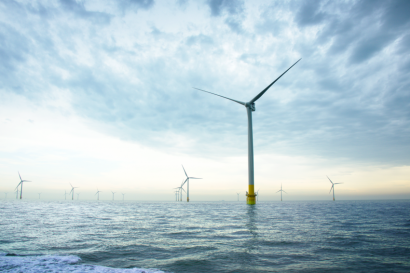Energi Danmark is one of the largest Danish players in the market for trading electricity for business customers. Their portfolio includes many parks within the Danish onshore wind industry as well as a rising number of solar PV plants and upcoming Power-to-X (PtX) plants.
As the energy transition continues to spur, so does the number of new demands and requirements needed to maintain a balanced energy supply system in the future. To accommodate the increasing number of requirements and the development in the market, Energi Danmark needed a future-proofed and flexible software system that could support their business so they could continue providing the best solutions and access to the market for their customers.
"We were looking for a reliable business partner who had experience in complex software solutions and control of physical assets, both in a national and international context. So, we chose to work with SCADA International, as their competencies within software development matches the needs and wishes we have," says Aslak Jakobi Kristensen, Head of Production, Origination, at Energi Danmark.
The new agreement stems from a long-term partnership between Energi Danmark and SCADA International, and SCADA International is very pleased with the continued cooperation:
"We have had a close collaboration with Energi Danmark for many years now, so it was natural for us to start the dialogue regarding the supply of an ETRM-system. It is part of our DNA to work closely with our customers and become familiar with their needs and desires, and we are very much looking forward to this new journey with Energi Danmark," says Thomas Bagger, CEO at SCADA International.
Growth in renewables challenges the balance of the grid
The accelerating growth within renewables and the many new requirements and regulations raise the complexity of the energy market and pose new challenges in balancing the energy production and the energy demand.
Today’s energy mix is increasingly diversified, as both solar PV and wind power plants together with conventional energy sources, make up the energy produced for the grid. At the same time, the market is growing to become more flexible. Consumers are taking more part in the energy market and upcoming PtX plants are expected to play a fundamental role in the future. Energi Danmark is responsible for balancing the grid, and thus, it is crucial that they have the tools that can accommodate the complexity:
"We are all aware of the fact that renewables will play a vital role in the energy market of the future. And that is why it is essential for us to have a setup that meets the needs and demands that the future brings so that we can provide the best option possible for our customers. It is a determining factor that we have a scalable setup that works across countries," says Aslak Jakobi Kristensen.
Simple bidding through automated software
SCADA International has already started the development of the ETRM-system. The software includes several automated processes that will enable fast decision-making and reliable data handling.
This is important as the market processes will change in the years to come. Today, energy suppliers and consumers trade energy in the day-ahead market or intraday market, and here, the bidding takes place on an hourly or daily basis. In the future, bidding will happen on a 15-minute-basis, which increases the complexity in the energy trading setup, and especially the systems being used. Additionally, the market for ancillary services will also change as the growing numbers of renewables connected to the grid pose new threats to the balance of the grid.
SCADA International’s ETRM-system does include an interface where bids are received and forwarded to the power exchange and where bids for ancillary services and energy plans are sent to Energinet, the Danish TSO (Transmission System Operator). Furthermore, the system will be connected to weather forecasts and real-time data from, e.g., wind turbines. It will also handle all communication and regulation between Energy Danmark, energy suppliers, and other stakeholders.
"The system is built on the idea to unify all communication and control in one single software. This approach aligns with our existing OneView® software, which provides data collection, analysis, management, and control across different technologies and renewables in one unified system," says Thomas Bagger.


